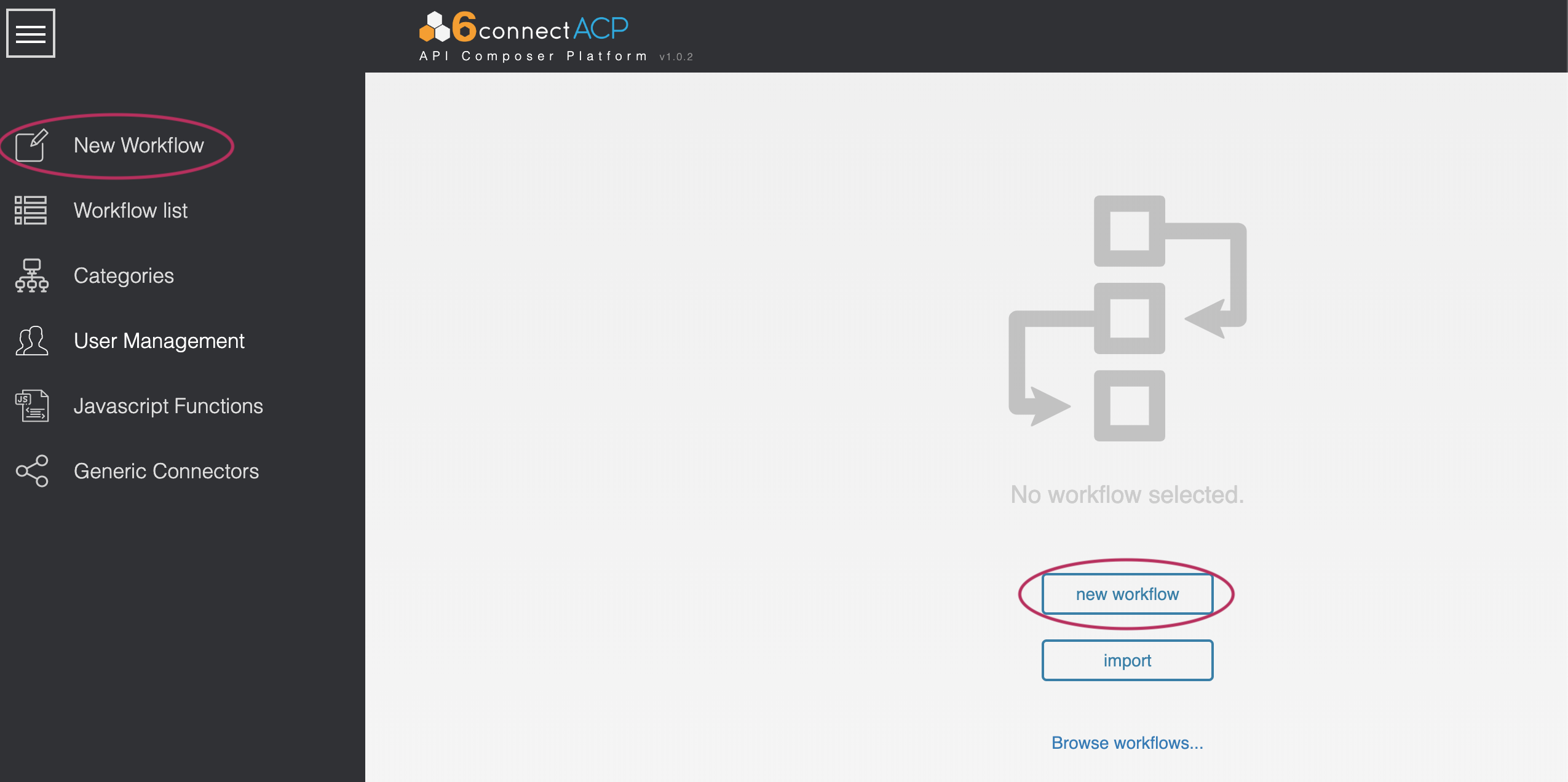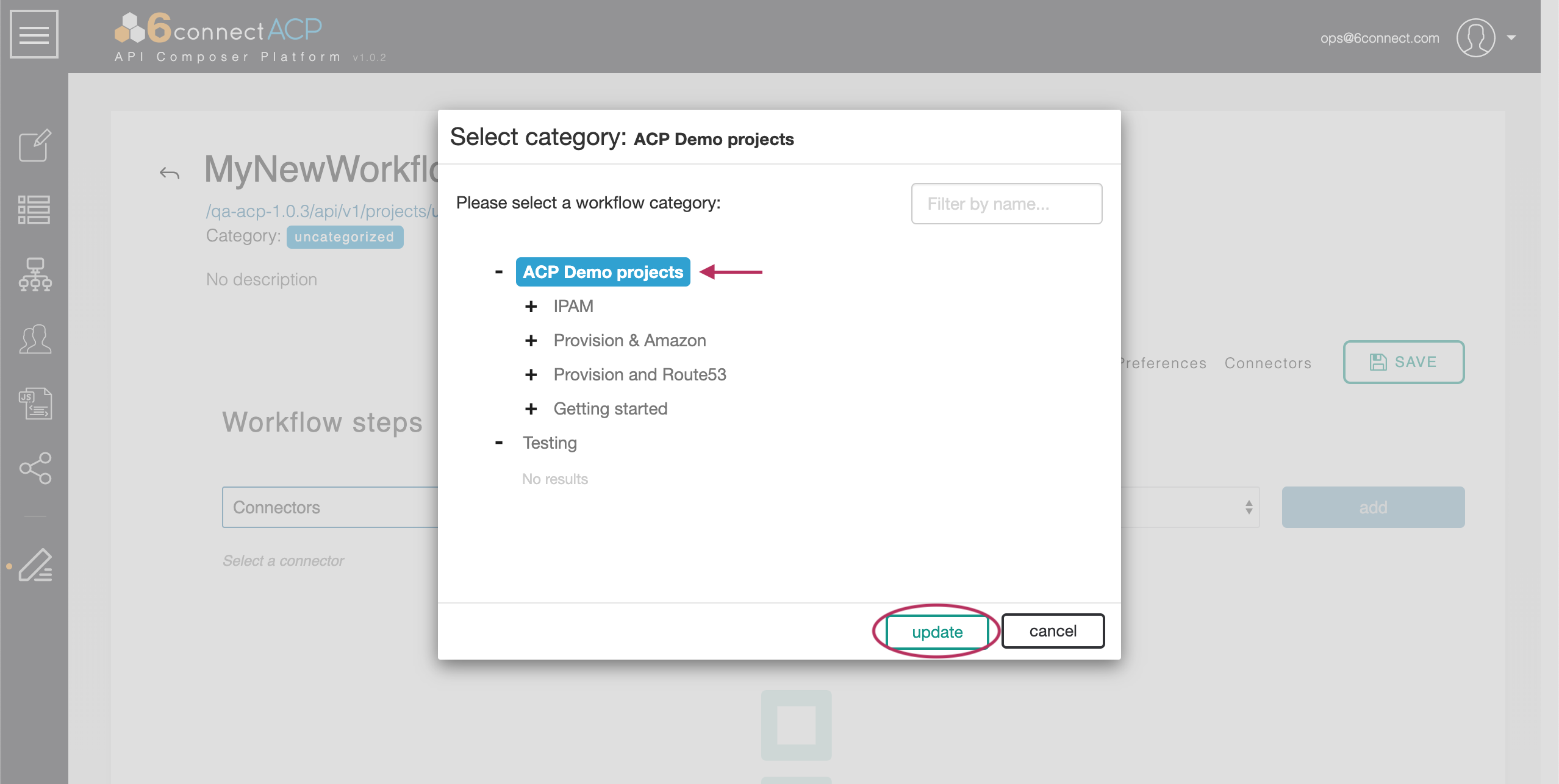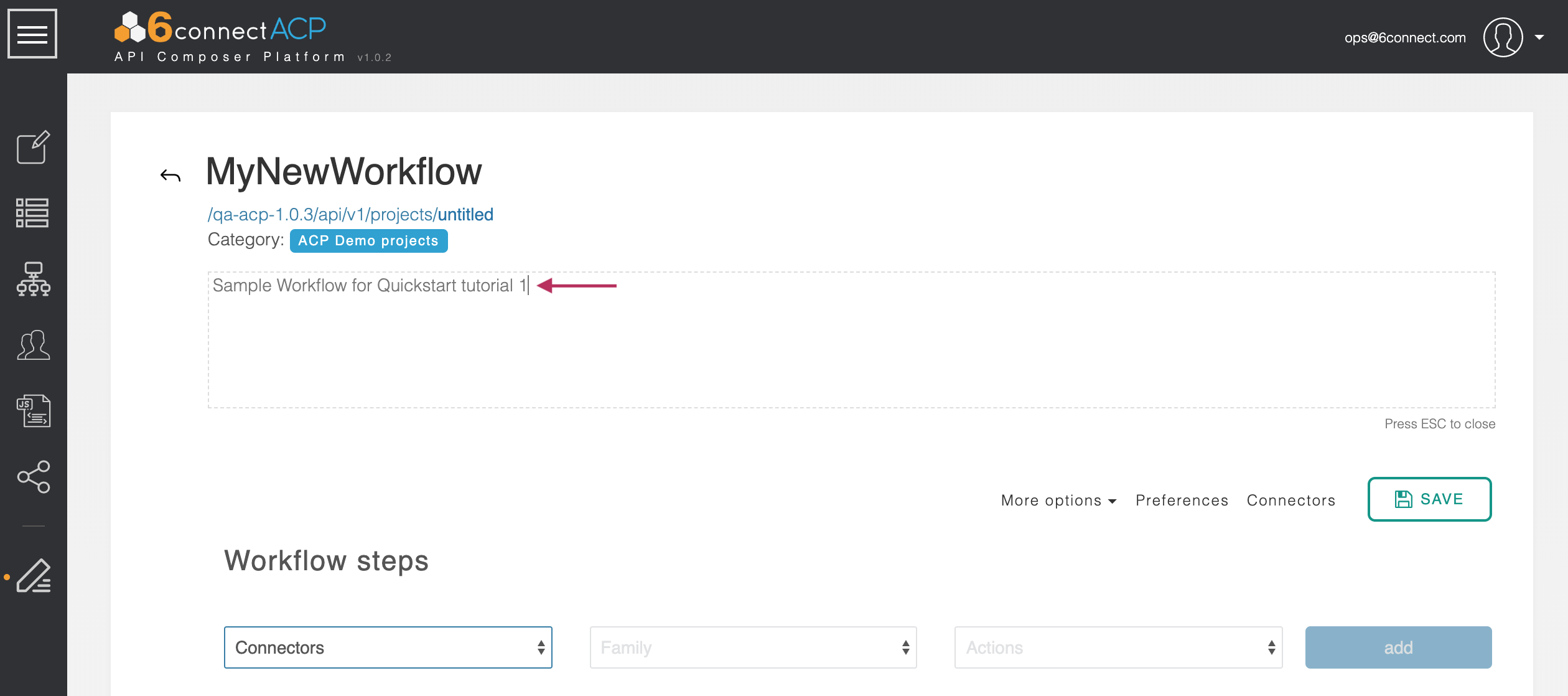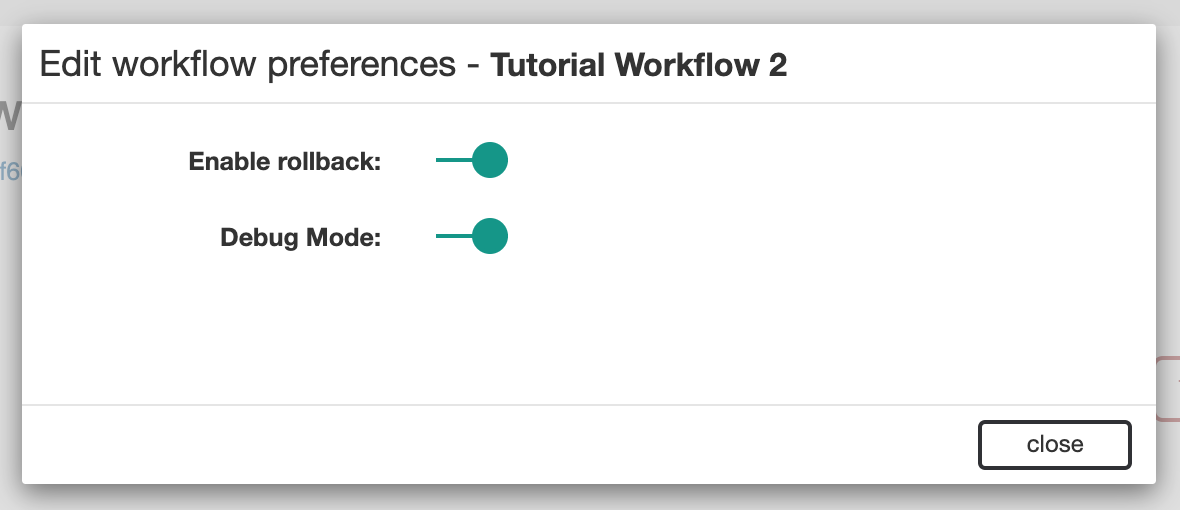...
ACP Workflows
Creating a New Workflow
A new workflow can be created from the “New Workflow” button in the primary actions menu, or by the “New Workflow” button just after login.
Once a new workflow is created, it immediately appears in the main ACP editor.
...
The upper-left area of the ACP editor shows basic information about the workflow, all of which can be edited in place.
The workflow name can be edited by clicking the "edit" button that appears when hovering over the name, then clicking "close" when complete.
The ‘slug’, below the workflow name, is the means by which the workflow is executed from outside ACP. It is the distinct URL for the workflow. The slug can be edited, but not the path leading to the ACP projects folder.
...
The category the workflow is assigned to can also be changed. Clicking the existing category brings up a list of all existing categories. Picking a new category will assign this workflow to it.
The description box is a free-form text field which can contain any notes that are associated with this workflow, and directly edited by double clicking on the current description, then clicking anywhere outside the description area when complete.
Workflow
...
Preferences
Rollback Mode and Debug Mode
The ‘preferences’ link in the upper-right can be used to bring up an options menu.
The choices are:
- Enable Rollback: this setting controls whether the workflow immediately halts or rolls back executed steps when it encounters a failure condition, or is unable to find an appropriate Route at the end of a step.
- Debug Mode: this setting controls whether or not detailed debug output is shown at the end of workflow execution within the ACP GUI. It has no effect on execution via API calls. For an example of how to use Debug mode, see Quick-Start Tutorial 2.





